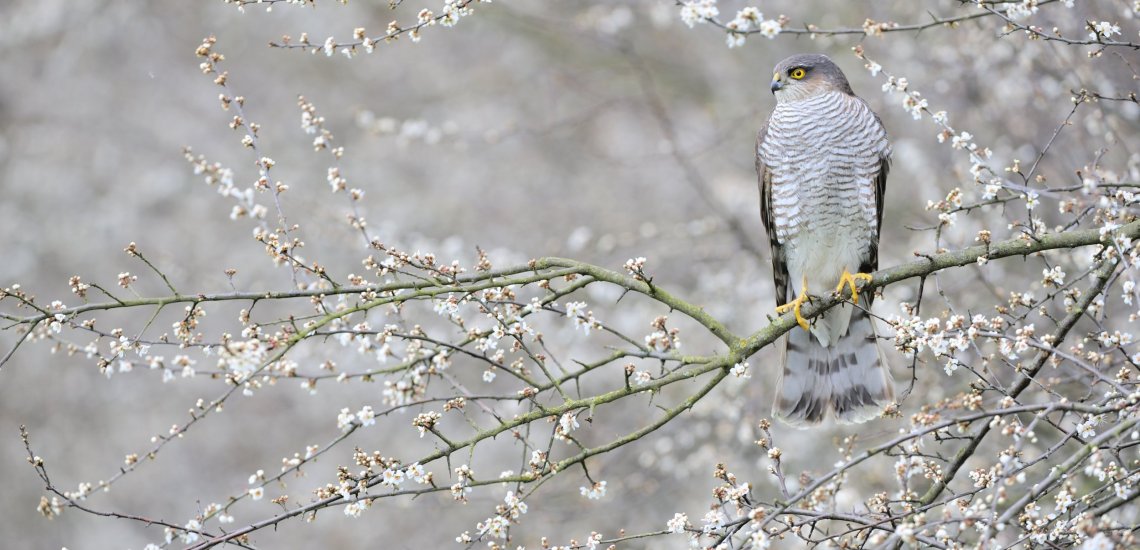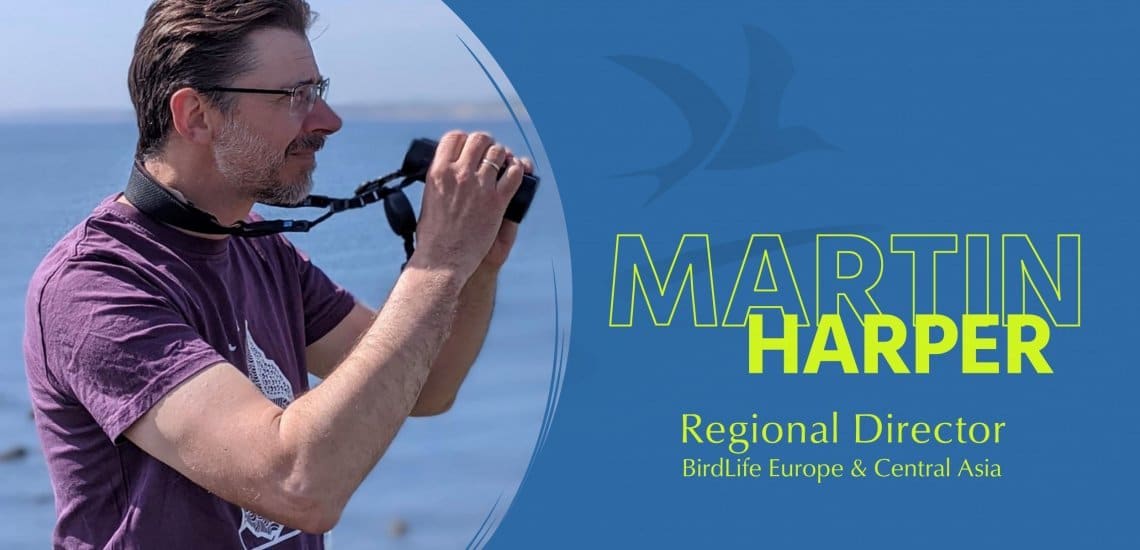Countdown 2030: as the planetary crisis bites, why it pays to invest in nature for the climate

It has been hard not to be deeply affected by the events of the past few weeks: catastrophic floods in Germany, China and India killing hundreds of people; forest fires in Siberia and North America; and drought and famine in Southern Madagascar. We know these extreme weather events have been triggered by the climate crisis, and it acutely demonstrates that we are now living with the consequences of our collective failure to wean ourselves off fossil fuels.
By Martin Harper, Regional Director, BirdLife Europe & Central Asia
The effects on human lives and livelihoods are horrendous, and there are very serious impacts on wildlife as well. It was appalling, for example, to see the video taken by a volunteer of Turkish BirdLife partner, Doğa Derneği, of thousands of dead baby flamingos near Lake Tuz (Salt Lake) in Anatolia, Turkey. This unbearable scene was the result of a major water shortage in the region. Lower rainfall and unsustainable irrigation practices going back to the 1960s had caused a drought. The situation will only get worse, unless more sustainable water and agriculture practices are introduced at pace.
While shocking, none of this should come as a surprise. We have known the risks for decades, and these have been communicated by high profile politicians such as UK Prime Minister, Margaret Thatcher, who said in her famous speech to the UN General Assembly in 1989 that the main threats to our environment are “[the land that people] cultivate ever more intensively; the forests they cut down and burn; the mountain sides they lay bare; the fossil fuels they burn; the rivers and the seas they pollute. The result is that change in future is likely to be more fundamental and more widespread than anything we have known hitherto. Change to the sea around us, change to the atmosphere above, leading in turn to change in the world’s climate, which could alter the way we live in the most fundamental way of all.” And we have known for fifteen years thanks to the Stern Review that it makes economic sense to take action now rather than having to pay to deal with the consequences.
Most recently, the 2019 report from the IPCC (which is meeting again this week to discuss the latest science) highlighted the benefits to people and wildlife from keeping average global temperature rises below 1.5°C above pre-industrial levels. So, while the challenge can feel enormous, it is worth remembering that everything we do NOW can make a difference. Let’s look at emissions from land use, for example. In the latest draft of the UN’s Global Biodiversity Framework (to be agreed at the meeting of the Conference of the Parties to the Convention on Biological Diversity later this year), it proposes a new target to “minimize the impact of climate change on biodiversity, contribute to mitigation and adaptation through ecosystem-based approaches contributing at least 10 GtCO2e per year to global mitigation efforts, and ensure that all mitigation and adaptation efforts avoid negative impacts on biodiversity.” If we meet this target, then this would result in reducing peak warming by 0.1 to 0.3°C. This may not sound like a lot, but it absolutely buys time to help make the energy transition away from fossil fuels. Time is of the essence: reducing emissions to zero will take several decades, which is why we have to move much faster than any current policy allows.
The CBD target, if approved, would be in line with recent estimates about the contribution that can be made from protecting, managing and restoring land. Yet, scientists say this would require stopping the destruction of ecosystems worldwide (including 270 million hectares of deforestation), restoring 678 million hectares (especially of high carbon habitats like peatlands) and improving the management of 2.5 billion hectares of land. And this is why other CBD targets for protecting 30% of land and sea by 2030 and for restoring 20% of degraded land by 2030 are so important.
The wording of all of these targets matter and BirdLife International will be working hard to influence politicians to tighten the language in the next few months (for example by ensuring the restoration target covers not just degraded land*). Yet, more important will be the translation of these targets into regional and national laws backed up by adequately resourced action plans. Even though obliged under the Convention, 20 nations out of 196 still do not have national biodiversity strategies including, from what I can gather from the CBD website, Kazakhstan, Israel, Iceland, Uzbekistan, Cyprus and Bulgaria (although the latter two may argue they are covered by the EU’s Biodiversity Strategy).
There is a major job not just to secure the right ambition in the global deal for nature, but to then turn it into tangible action. This must be a key advocacy focus for conservation NGOs over the coming months and it is why BirdLife is campaigning so hard to ensure the European Union agrees an ambitious new Nature Restoration Law. The text of a global convention is meaningless unless backed up by action.
The second half of the proposed CBD climate mitigation target is just as important: “ensure that all mitigation and adaptation efforts avoid negative impacts on biodiversity.” While the impacts of poorly located wind turbines on wildlife are well known, the perverse impacts of bioenergy are perhaps greater and set to get worse. There are already incredibly shocking examples of how natural forests (in countries as diverse as Cambodia and Chile) are being cleared for bioenergy and this mistake is being repeated in Europe.
BirdLife has been working hard to try to expose the perverse and serious consequences of promoting bioenergy as a solution to the climate change challenge. We have recently produced a report which outlines the extraordinary pressure that bioenergy has on land use, highlighting just how inefficient it is as a means of growing energy: generating 1 MW of energy from biomass requires 400 hectares of land, which is 1300 times more than that required for wind (0.3 hectares). Meeting existing global demand for biodiesel would require 4.2 million hectares of land, which is why it is the single biggest driver in increasing demand on land use. Instead, as advocated by Chatham House recently, we should be concentrating efforts on setting aside land for nature rather than taking it away, improving the wildlife value of farmed land and changing diet and consumption patterns.
Securing global ambition for nature’s restoration, translating this into regional and national laws and plans, ending perverse subsidies for bioenergy and radically transforming the food system are all essential to ensure we maximise the contribution that nature can make to tackling the climate crisis. Remember, there are 118 months left of the UN Decade on Ecological Restoration.
*For example, we recently estimated that the provisional European Commission target (under the proposed Nature Restoration Law) for restoring 15% of degraded habitat by 2030 would constitute just 3.6% of EU area. We think that this is a timid ambition and not only would it fall short of the new CBD target, we think we should be restoring 15% of the overall EU land, river, and sea areas by 2030.
This blog is part of a series I am writing. You can read my previous blog here. Do you have any thoughts on what I have written? It would be great to hear your views. Send me a tweet – my handle is @MartinBirdLife.

